Flossing with braces can be difficult, but there are ways to make it easier.
If you or your child has braces, you will know that it can be tricky to floss thoroughly. It is important, however, that you maintain proper oral hygiene If you or your child has braces, you will know it can be tricky to floss thoroughly. It is important, however, that you maintain proper oral hygiene habits throughout your orthodontic treatment — this will help to keep your teeth clean and healthy and ensure that you keep issues like stains, plaque build-up, tooth decay, and gum disease at bay. Read on for our top tips to make flossing with braces as easy as possible…
1. Choose the right tool
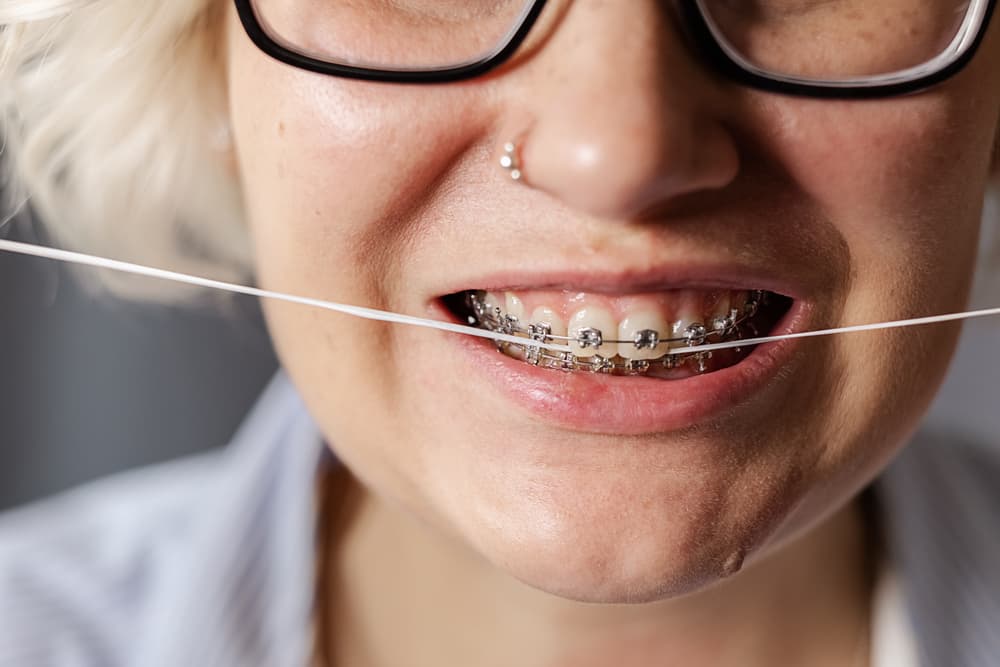
Traditional dental floss is usually easy to use, but if you have braces, you might find it difficult to manoeuvre between certain hard-to-reach teeth. To make the process easier, you might consider using an orthodontic floss threader — this special tool makes it possible to move the dental floss through the teeth above the wire, enabling you to access the gum line. The tool is made from sturdy but flexible plastic and is fairly easy to move around and behind orthodontic wires. To use a floss threader, use around 30 cm of dental floss, and insert around 12 cm of one end inside the loop of the threader. Move the floss threader through your braces and into a gap between your teeth before removing the loop of the threader. You can then floss as normal. To floss thoroughly, gently press the floss into your gum line to form a C shape, and move it up and down the sides of your teeth. Repeat this process for each tooth, and then dispose of the threader when you are done.
2. Try waxed floss
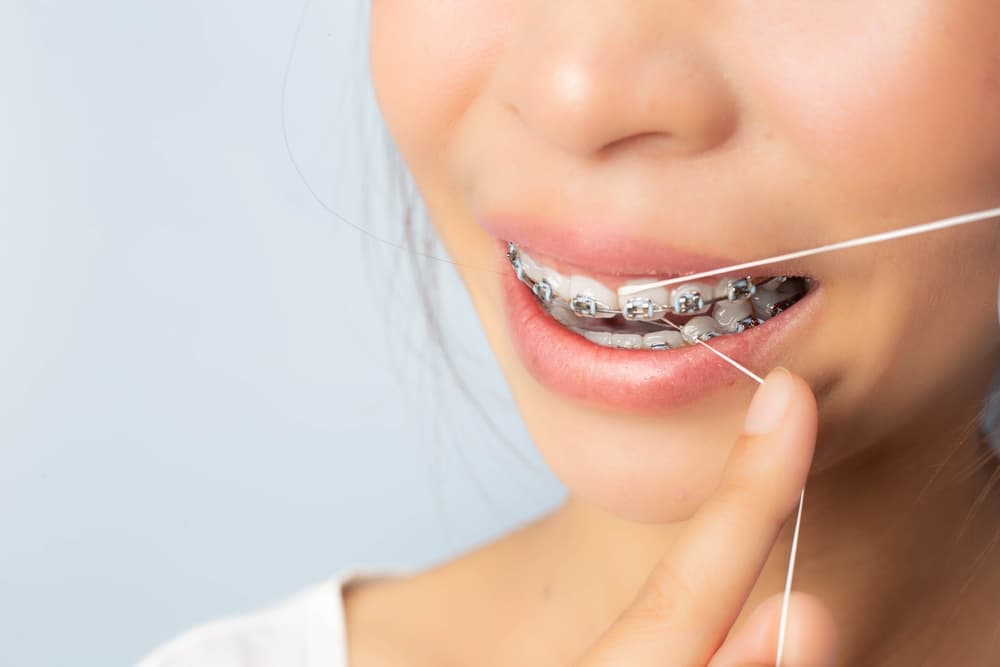
If you have braces, you are likely to find it easier and more comfortable to use waxed floss rather than regular floss. Regular floss can easily catch on the components of your braces, while waxed floss will glide between the teeth more easily without getting stuck. Use a floss threader and gently move the floss into the gum line between teeth. Remove the floss and threader and move on to the next tooth.
One of the benefits of waxed floss is that it tends to be easier to move between the teeth. This is because it contains a very thin layer of wax on its surface. Although waxed floss is thicker than regular floss, it generally allows for a smoother flossing process than unwaxed floss. The layer of wax also makes the floss very strong — this means it is unlikely to break, even when manoeuvring between the components of your braces.
You might also consider using dental tape rather than floss, especially if you are struggling with sensitive gums. Dental tape is wider than floss and smoother in texture. It tends to glide easily between the teeth and is less likely to cause your gums to bleed if you are new to flossing and find that the process is uncomfortable. Once you make flossing a habit, your gums will get healthier, and they should begin to feel less sensitive.
3. Help your child

If you have a young child with braces, it’s advisable that you help them floss their teeth daily. Young children simply don’t have the ability to floss thoroughly, especially with braces. Bear in mind that the flossing process can take a while, so you might find it helpful to have your child sit comfortably and allow them to listen to music or watch their favourite show while you floss their teeth.
Flossing is just as important for children as it is for adults. Every time that your child eats, plaque forms and builds up on their teeth and around the components of their braces. Plaque contains harmful bacteria that can contribute to issues like tooth decay and gum disease, which is why it should be removed regularly.
4. Make it a habit
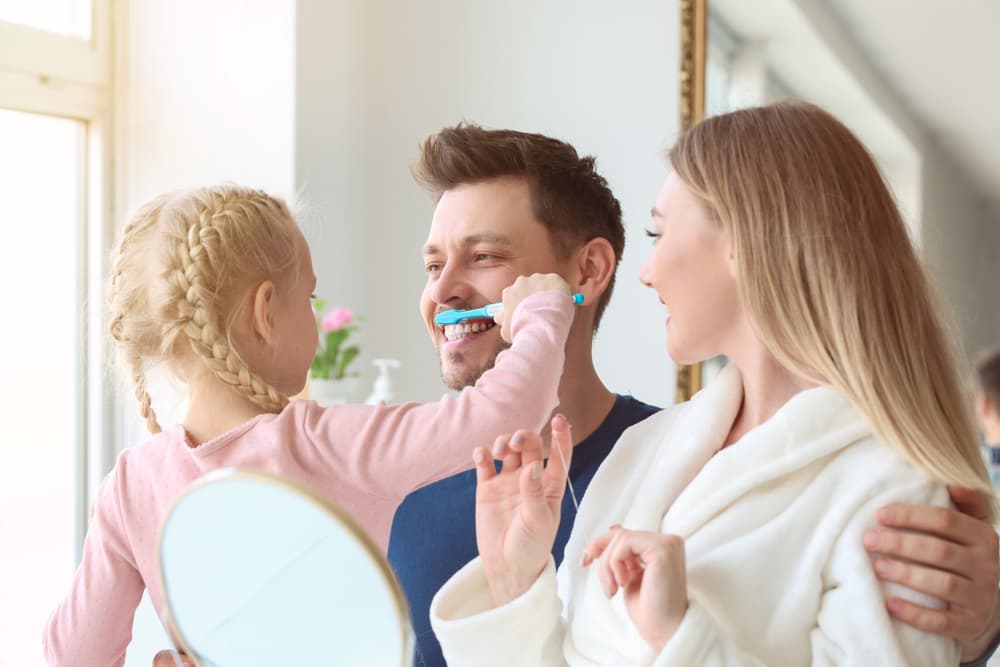
In order to maintain optimal oral health throughout the course of your orthodontic treatment, it is important that you floss every day. Try to make it a part of your routine so that you don’t forget to do it regularly. Ideally, you should floss your teeth after brushing — that way, it will be easier to remove food particles and other debris. If left to accumulate, plaque can harden into tartar, which in turn can lead to serious issues like gum disease.
To make sure that flossing becomes a daily habit, you might consider setting a reminder on your phone or sticking a note on your bathroom mirror. It’s also a good idea to keep your floss somewhere you are likely to see it — place it on your basin rather than in a drawer, for example. Small reminders can go a long way toward helping you establish and maintain healthy habits.
5. Take your time

If you use the traditional method of flossing with dental floss, it’s important to know that it takes time to thread the floss around the brackets and wires. It’s advisable that you set aside between 10 and 15 minutes to floss your teeth each time. Don’t rush the process — with the right technique, flossing can effectively get rid of plaque and food particles from between the teeth and along the gum line.
Using a floss threader often saves a bit of time because it makes the process of pulling dental floss behind the wires easier.
6. Go for regular cleanings
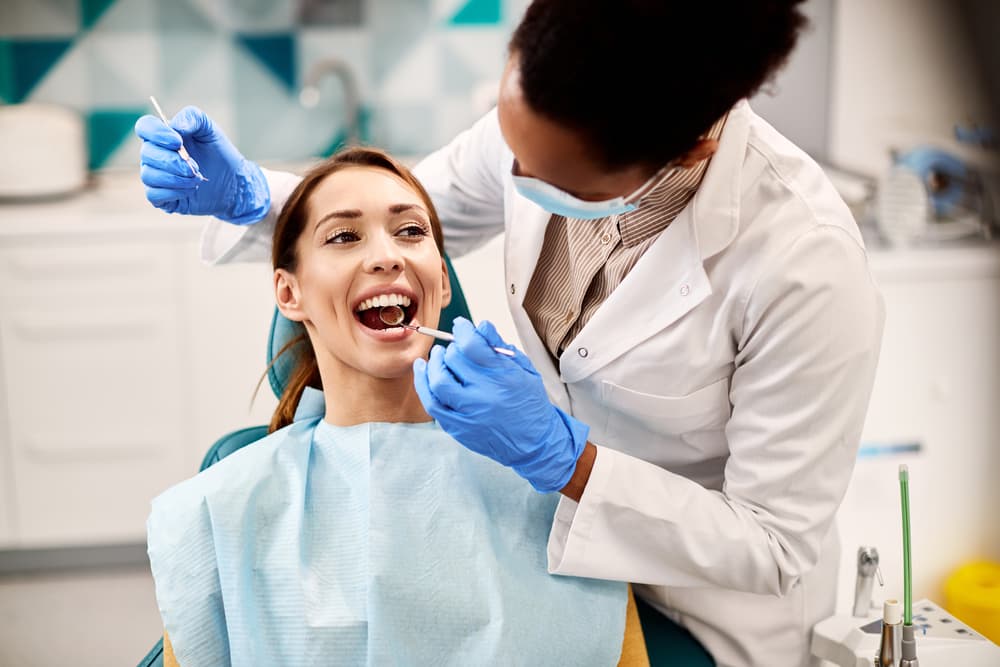
Flossing your teeth regularly will help to keep your smile in top condition throughout your orthodontic treatment. In addition to good oral hygiene habits, you should see your dentist or hygienist for regular professional cleanings while you have braces. They will be able to give your teeth a deep, thorough cleaning and remove plaque and other debris from around your brackets. This will help to prevent issues like tooth decay and gum disease, and it will also keep stains at bay.
When you have had your braces removed, you will have your teeth cleaned again so that you can enjoy a bright, beautiful smile once your orthodontic treatment is complete.
7. Try an oral irrigator

If you find it difficult to floss your teeth with braces, you might consider using an oral irrigator. The tool is designed to clean between the teeth and along the gum line with the help of a stream of water. To use the device, begin by filling the reservoir with water and inserting the tapered tip. Check that the water pressure is suitable by pressing to send water through the flosser. If you are satisfied, place the tip of the machine in your mouth and turn it on. Move the stream of water along your gumline and between each tooth—this will help to remove plaque and food particles.
Oral irrigators work very efficiently, so you will only need to floss this way for a few minutes each time.
8. Consider an electric toothbrush
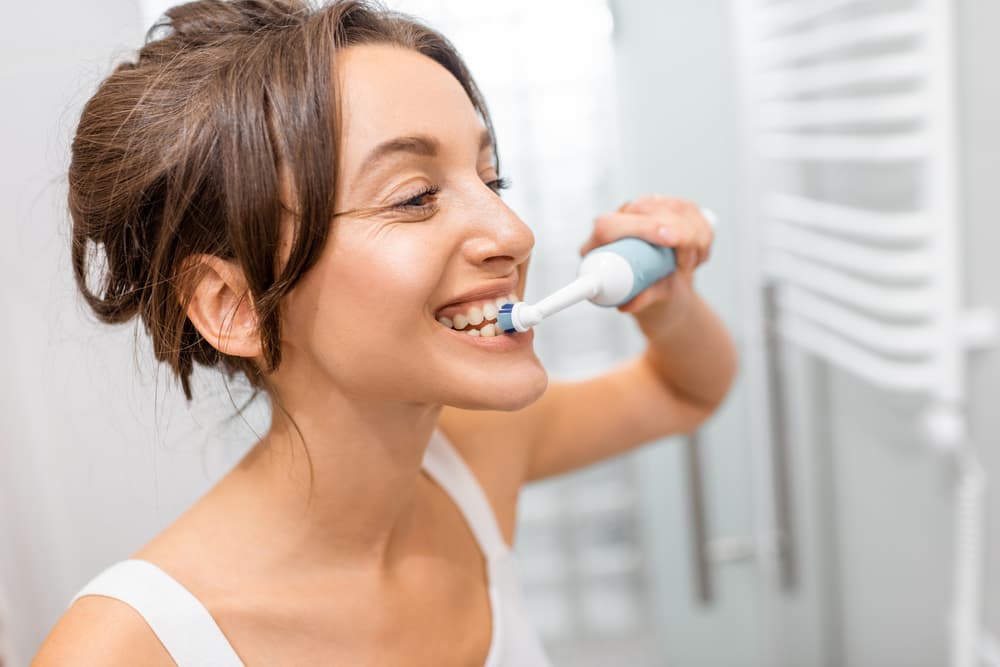
Regular flossing is essential when you have braces, but don’t forget that it’s just as important that you brush your teeth properly as well. A soft-bristled toothbrush is best, and for an extra-thorough clean, you might consider switching your manual toothbrush for an electric one.
Electric toothbrushes are very effective at removing plaque and, when used correctly, should not cause any damage to the enamel or gums. When you b
Electric toothbrushes are very effective at removing plaque and, when used correctly, should not cause any damage to the enamel or gums. When you brush your teeth, you should avoid using whitening toothpaste while you have braces. Although you might want to keep your smile looking bright, whitening products won’t get under your brackets. When your braces have been removed, chat with your dentist about a whitening treatment or whitening product that can boost the appearance of your smile.
How can we help?
At Straight Orthodontics, we care about our patients’ oral health, which is why we always encourage proper oral hygiene habits throughout the course of orthodontic treatment. If you have braces and would like some advice on keeping your smile healthy, please don’t hesitate to come in and see us. Our team is happy to address any questions or concerns that you have and will provide you with all the information you need to keep your teeth looking and feeling good.
We provide a comprehensive range of orthodontic solutions. As well as traditional braces, we also offer ceramic braces, retainers, and clear aligners. To see the full scope of our treatment options, please have a look here. To book an appointment, please contact us here or give us a call at 03 9585 8000. We look forward to helping you achieve and maintain a beautiful, healthy smile.

